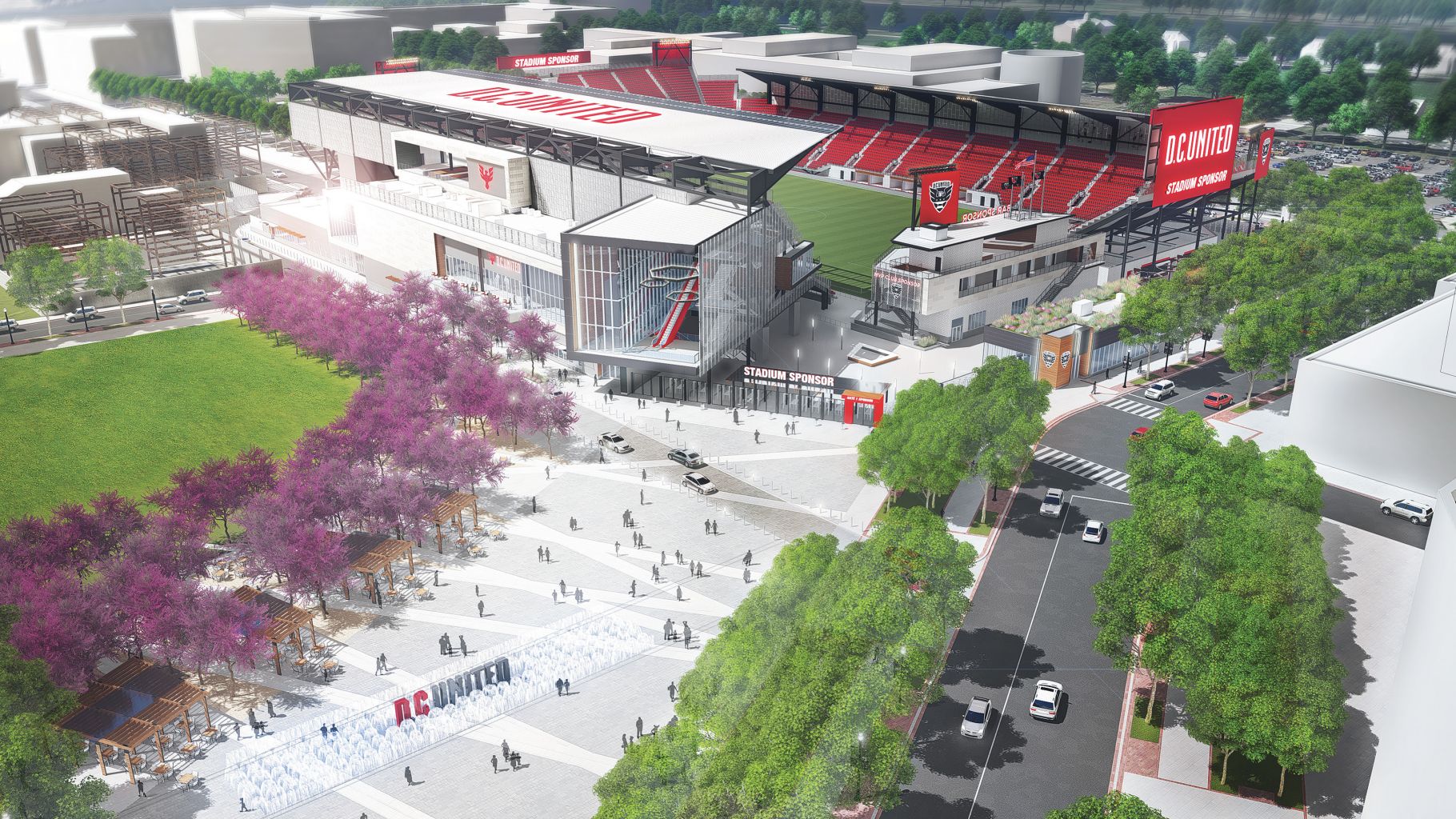
More than Soccer: Audi Field and Urban Renewal
DC United’s Audi Field opened only 10 days ago, but the stadium has already begun making an impact on the surrounding area. Audi Field’s influence will ultimately bring changes and a sense of renewal to the city’s Buzzard Point.
Buzzard Point has been relatively quiet in recent years, in large part due a number of vacant lots and outdated buildings. However, the city believes that the stadium will act as an anchor to spur further development and make Southwest DC’s waterfront the city’s new downtown hotspot.
There are high expectations for the $300 million venue, projected to host 1 million visitors each year and generate $1.6 billion in economic activity over the lifetime of the stadium. The stadium will also provide an abundance of full-time job opportunities. Analysts expect the stadium to create 1,683 new full-time jobs for DC residents and to create $1.3 billion in employee earnings.
Audi Field also aims to craft a sense of community in Buzzard Point. In front of one of its gates, the stadium opens to a front lawn, a public space allowing people to congregate and socialize. From this spot, the field is visible, welcoming those using the public space to come into the stadium.
According to Todd Spangler (of architecture firm Populous, which led the stadium design effort) “It is yet another example of Audi Field’s tight footprint being used to its advantage.” The stadium’s exterior will also act as a public space for use on days when the stadium is not holding an event.
To further draw residents into Buzzard Point, the city will place restaurants, retail outlets and attractions around the area. Audi Field is supporting this effort with retail spaces designed into its exterior. The stadium also contains a gate to guide visitors toward the city’s upcoming river walk.
Commented our own Michael Marshall, (MMD was a part of the design team), “It is really great to have a strong sense of community in these areas.”
Throughout the company’s history, Michael Marshall Design has been committed to bringing life to underdeveloped neighborhoods. Just a few years ago, MMD completed a major restoration of the Howard Theater, the oldest African-American performance theater in the nation.
“Not long ago, the Howard Theater was completely boarded up. Now it is a major economic contributor to the Shaw area,” he noted.
MMD also designed the University of the District of Columbia’s Student Center, which has amenities that not only serve the university community but also serve the neighborhood along Connecticut Avenue. Retail and social spaces are open to the public and have helped to spur more economic development along this corridor.
Currently, the firm is designing Bread for the City’s new center in Southeast DC, not far from Audi Field. The new center, which broke ground this summer, will serve vulnerable members of the community with assistance in the form of food, clothing, medical care and social services. The building aims to provide a sense of security to those in the community who struggle and seek help.
“As a native Washingtonian, it is rewarding to see many of these streets become so vibrant again,” Michael said. “Ultimately, these areas need to serve a purpose, and serve the people of our city.”